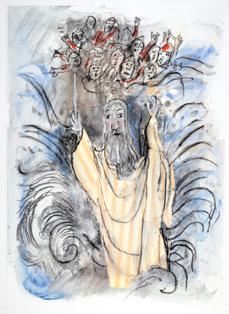“Puisque Esther, elle aussi comédienne, sut jouer la comédie au roi”: la storia di Ester nel teatro giudeo-provenzale
DOI:
https://doi.org/10.13130/2035-7680/1160Parole chiave:
Ester, Crescas du Caylar, Mardoché Astruc, Jacob Lunel, Armand LunelAbstract
The Judaeo-Provençal tradition of Purim celebrations is to be considered particularly interesting: in fact, most Judaeo-Provençal texts - which constitute a comparatively small corpus - are interpretations of the story of Esther, dating from XIV to XX century. In this article we will deal with some dramatic aspects in the representations of the story of Esther: the Roman d'Esther (1327) by Crescas du Caylar; the Tragediou de la Reine Esther by Mardoché Astruc and Jacob Lunel (1774); the Esther de Carpentras (1928) by Armand Lunel. We will also discuss the incidence of both traditional sources (with particular emphasis on the Midrashim) and contemporary culture in the theatrical inspiration of the three dramas.Metriche
Caricamento metriche ...
Dowloads
File supplementari
Pubblicato
2011-06-25
Come citare
Baricci, Erica. 2011. «“Puisque Esther, Elle Aussi comédienne, Sut Jouer La comédie Au roi”: La Storia Di Ester Nel Teatro Giudeo-Provenzale». Altre Modernità, giugno, 44-55. https://doi.org/10.13130/2035-7680/1160.
Fascicolo
Sezione
Saggi Ensayos Essais Essays




